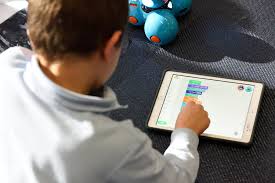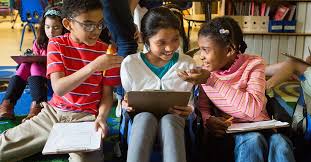What are observation activities? Record observations to track children’s progress for developmental milestones. In order to track a child’s development as they reach various milestones, staff often need to record observations of the child’s progress.
How do you teach observation to children?
How to improve a 5-year-old Child’s Observation Skills?
- Engaging with the child by talking and discussing.
- Including story books, rhymes and narratives.
- Include questions based on things observed or that are observable.
- Play games that need observation and concentration.
How do children develop observation skills?
Start with a specific focus.
- Pick an infant or toddler in your care to observe and make notes about what you see.
- Focus on a specific domain or goal to understand how the child interacts with peers or family, or when exploring objects.
- Use a checklist or other form to help you observe and track development.
How can observation activities be improved?
Follow these eight steps and you won’t miss a thing:
- Know your subject.
- Slow down and look outwards.
- Try something new.
- Improve your concentration by cutting out distractions.
- Challenge yourself to a mental workout.
- Test your observation by playing a memory game.
- Record and consider your observations.
- Stay inquisitive!
What are observation activities? – Additional Questions
What are observational activities for kids?
5 games and activities to practice Observe and Describe
- 5 games and activities to practice Observe and Describe. Practicing new behavioral skills isn’t only for children.
- Different objects in a bag.
- Watch your children play.
- Watch a familiar movie/TV episode.
- Play charades.
- Communication Blocks.
What are the 5 observation skills?
Observation skills are ones that allow you to recognize, process, and analyze your environment through the use of your five senses.
What Are Observation Skills?
- Controlled Observations.
- Overt Observations.
- Participant Observations.
- Naturalistic Observations.
What makes a good observation?
A good observation must be factual, accurate and sufficiently detailed. Having a tablet in the room with you can really help you capture things as they happen with accurate details rather than relying on recall at the end of the day, once the children have left the setting.
How do you improve your observation skills like Sherlock Holmes?
9 Ways To Observe And Deduce Like Sherlock Holmes
- Observe the details. When Holmes first met Dr.
- Pay attention to the basics.
- Use all of your senses.
- Be ‘actively passive’ when you’re talking to someone.
- Give yourself distance.
- Say it aloud.
- Adapt to the situation.
- Find quiet.
How do you teach students observation skills?
Take-home points. Careful observation skills can be developed within a rich variety of practical work. Students should be careful to distinguish between their observations and the inferences they then draw. Make use of tasks that are simple for students to carry out but that can provide multiple observations.
How do you develop observation skills in science?
We can start by exploring, using the senses of sight, hearing, smell, touch and taste as appropriate, and making and recording their observations, as well as any measurements taken.
What are some examples of observation?
Scientific observations can occur in a lab setting or the natural world. For example, watching an apple fall from a tree could be an observation. Noticing that fish only come to a particular part of the river in the early morning is also an observation. Smelling garbage decomposing is another example of observation.
Can observation skills be taught?
Observation is a key skill for homeschool science, that we need to impart to our students. A good bit of this can be done with demonstrations, experiments, or nature study. But did you know that you can also work on your students’ observation skills by: Giving them a pair of binoculars.
What are the two types of observational skills?
However, there are different types of observational methods and distinctions need to be made between:
- Controlled Observations.
- Naturalistic Observations.
- Participant Observations.
Why is it important for children to develop observation skills?
When you really see the child, you get to know her and see more of her abilities, interests, and personal characteristics. Knowing each child helps you to plan individualized and developmentally informed activities. Look at what the child does and says without evaluating or labeling.
Why is observation important in early childhood?
Observation of a child’s behavior can:
Help an educator better understand why a child might be having challenging behavior. Identify special needs. Better understand the child. Allows for documentation of skills.
What are the 4 types of observation in early childhood?
What are the best types of observation methods in early years?
- Anecdotal records. This method involves factual accounts of events that have taken place.
- Running records. This method involves noting down what you see and what the child says as it is happening.
- Time samples.
- Jottings.
- Work samples.
- Photographs.
What are the 4 types of observation?
The 4 main types of observation in sociology are participant observation, non-participant observation, covert observation, and overt observation.
What observation techniques are used in childcare?
Here are some different types of observation methods that can be used to observe a child:
- Anecdotal Records. This observation is usually recorded after the event has occurred and written in past tense.
- Running Records.
- Learning Stories.
- Jottings.
- Sociograms.
- Time Samples.
- Event Samples.
- Photographs.
How do you observe a child in Montessori?
A little something to do in a thoroughly Montessori way
- Here it is: Sit still. Yes, that impossible task.
- Sit and notice all the things your child or children are doing.
- Sit and observe your children at play.
- Sit and observe areas in your home or classroom.
How do you do observations in early years?
Elsewhere, Julian has talked about focusing on some key things in your observation: Focus on the length of time that the child was engaged in the activity. Write exactly what they were doing, with details about resources and words they used. Ask yourself, what does that mean for the child’s learning?
What are the 6 types of observation?
- Structured observation.
- Covert observation.
- Participant observation.
- Overt observation.
- Unstructured observation.




